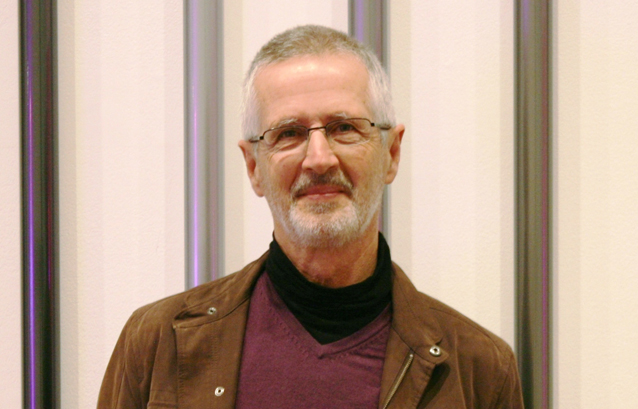Your name: Nigel Lendon
What you do: Artist, art historian, academic (in random order)
Your latest project: I’ve just finished replicating a work of mine which was destroyed in 1972 for Less is More, Minimal and Post-Minimal Art currently at Heide Museum of Modern Art. In the studio I’m reconfiguring constructivist experimental art from the 1920s. I’m also writing a book about Afghan modernism, and I also supervise postgraduate students at the ANU School of Art.
Who are three people that inspire/excite you:
1) Aleksander Rodchenko, for leaving me with a lot of unfinished business
2) Marcel Duchamp, for his poeticity (Roman Jakobsen) and his capacity to invert our expectations
3) Mayo Thompson and The Red Krayola, for their capacity to upset people.
What is your favourite…
travel destination: a return visit to Mashhad, Iran – the one place in the world where I feel completely alien
hotel/place to stay: Rocky Ridge, the locally owned beachfront villas on Tanna, Vanuatu
luxury goods company: 20th century Georg Jensen
value for money company: Material Pleasures, Fyshwick (for recycled designer clothing)
design classic: Globally, the Vincent Black Shadow – the only motorbike in the MoMA collection. Or, locally, the plastic Lightburn Zeta – the car that goes as fast in reverse as it does going forward!
new design: Cinnamon Lee’s digital jewellery (and her lighting works)
type of chair: my Grant Featherstone – I found it on a front verandah in Downer (yes! there’s a suburb in Canberra called Downer) and swapped it for a bottle of champagne.
meal: The rabbit paella at Barraca, Calle de la Reina, in Madrid
restaurant: Vue de Monde
drink: The Lonsdale Street Roasters coffee my resident anthropologist makes me every Saturday morning
bar: Izakaya Den, in Russell St, Melbourne
Item of clothing for…
Winter: The Canadian Tilley Endurables Winter Hat (with blizzard flaps)
Summer: ten-year old Teva sandals
artwork: My latest acquisition. It’s a skull (actually a self-portrait) made of rye grass by the West Australian artist Nalda Searle.
artist: The anonymous Afghan woman who made the prayer rug which celebrates the defeat of the Soviets – the one I’m writing about right now.
gallery/museum: The Prado, The Stedelijk, The Secession, Vienna
book: Orhan Pamuk’s My Name is Red
item in your studio: The white wall
piece of technology: the pencil
historical figure: Walter Benjamin
fictional character: M. Hulot
vice: I am a serial collector
virtue: I give things to good homes
What does the term ‘Design Hunter’™ mean to you? Now that I’ve answered all these questions – I now know that first it means giving priority to the visual over all other senses, and secondly it’s the capacity of some of the things you see to give you fresh pleasure every time you see them.
Photograph by Pamela Faye McGrath: Nigel Lendon in front of his “Untitled Wall Structure” 1970-2012 at Less is More: Minimal and Post-Minimal Art, at Heide Museum of Modern Art

